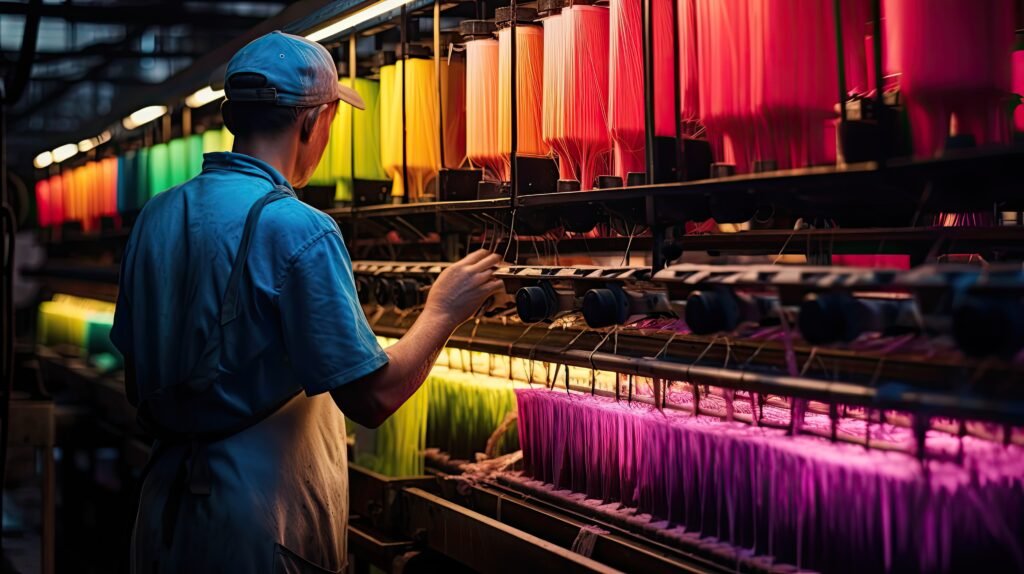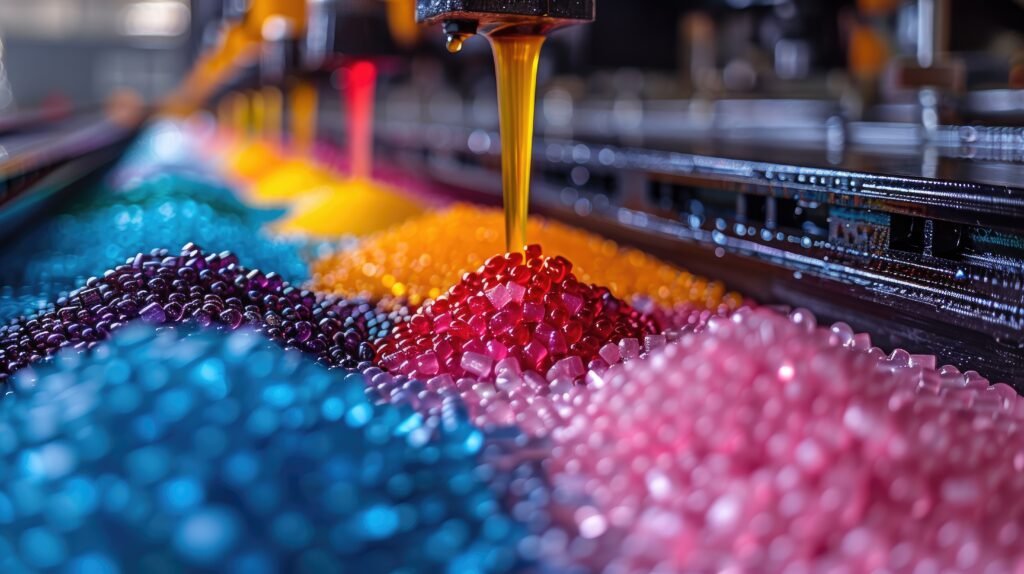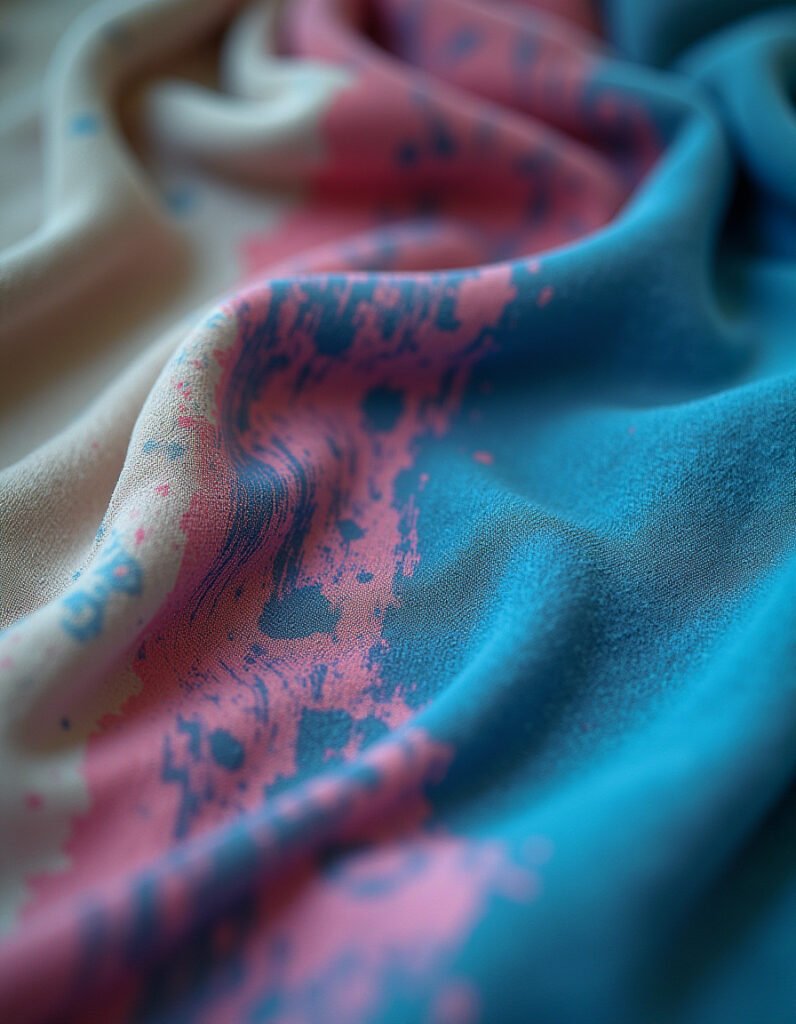
Dyeing Industries
Dyeing is the process of adding color to fabrics and textiles. Different types of dyes are used depending on the fabric type, how long the color needs to last, and the desired shade. Below are some of the most common dyes used in the textile indAustry.

Direct Dyes
Direct dyes are dyes that dissolve in water and can be applied directly to fabric without using extra chemicals. They work well with cotton, linen, and rayon. Since they easily attach to fibers, they are simple to use. However, they may not last as long as other dyes when exposed to washing or sunlight.

Reactive Dyes
Reactive dyes are some of the most durable dyes available. They bond chemically with fabrics like cotton and linen, making them highly resistant to washing and fading. These dyes are widely used in fabric printing and are available in a variety of bright colors.

Naphthol Dyes
Naphthol dyes require a two-step process. First, the fabric is treated with a special solution, and then it is mixed with another chemical to create the final color. These dyes produce bright and strong colors that do not fade easily. They are often used in traditional dyeing methods like batik and tie-dye.

Acid Dyes
Acid dyes are mainly used for dyeing wool, silk, and nylon. They require an acidic solution to work properly. These dyes create vibrant colors and are often used in fashion textiles. However, they may require extra care to prevent fading over time.

Remazol Dyes
Remazol dyes are a type of reactive dye that forms a strong bond with fabric. They work well with cotton, silk, and wool, making the color last longer. Since they chemically react with fibers, they don’t wash out easily. They are commonly used in textile printing and for making colorful garments.

Basic Dyes
Basic dyes are known for their bright and deep colors. They are mostly used for synthetic fibers like acrylic and polyester. Apart from textiles, these dyes are also used to color paper, plastics, and leather. However, they may not be as resistant to washing as other dyes.
The chemical industry plays a vital role in manufacturing products used in various fields, including textiles, pharmaceuticals, agriculture, and construction. Chemical processes often involve multiple stages to enhance the quality, durability, and performance of materials. The three key stages in these processes are pre-treatment, post-treatment, and finishing.


Pre-Treatment
Pre-treatment is the first stage in chemical processing, where raw materials or products are prepared for further processing. This step ensures that the materials are clean, impurity-free, and ready to undergo chemical reactions or additional treatments.
Common Pre-Treatment Processes :
- Cleaning : Removal of dirt, oil, and contaminants from raw materials.
- Neutralization : Adjusting pH levels to ensure chemical stability.
- Surface Preparation : Treating materials to improve adhesion for coatings or further processing.
- Bleaching : Removing unwanted color or stains, especially in textiles and paper industries.
- Pre-treatment is essential for ensuring that subsequent chemical processes are efficient and produce high-quality results.

Post-Treatment
Post-treatment refers to the processes applied after the main chemical reaction or treatment is completed. This stage helps improve the strength, stability, and usability of the final product.
Common Post-Treatment Processes :
- Neutralization : Balancing pH levels to prevent further reactions.
- Washing : Removing excess chemicals and residues from the treated material.
- Drying : Eliminating moisture to stabilize the final product.
- Curing : Using heat or chemicals to set colors, coatings, or finishes.
- Post-treatment enhances the durability, safety, and effectiveness of chemically processed materials before they are ready for use or further modification.



Finishing
Finishing is the final stage in chemical processing, where additional treatments are applied to improve appearance, texture, or functionality. This step ensures that the product meets quality standards and customer requirements.
Common Finishing Processes :
- Coating : Applying protective layers to prevent corrosion or damage.
- Polishing : Enhancing the shine and smoothness of surfaces.
- Softening : Improving texture, commonly used in textiles.
- Waterproofing : Adding resistance to moisture and environmental factors.
- Finishing techniques vary depending on the industry and the intended use of the product. They add value and improve the overall performance of chemically treated materials.
